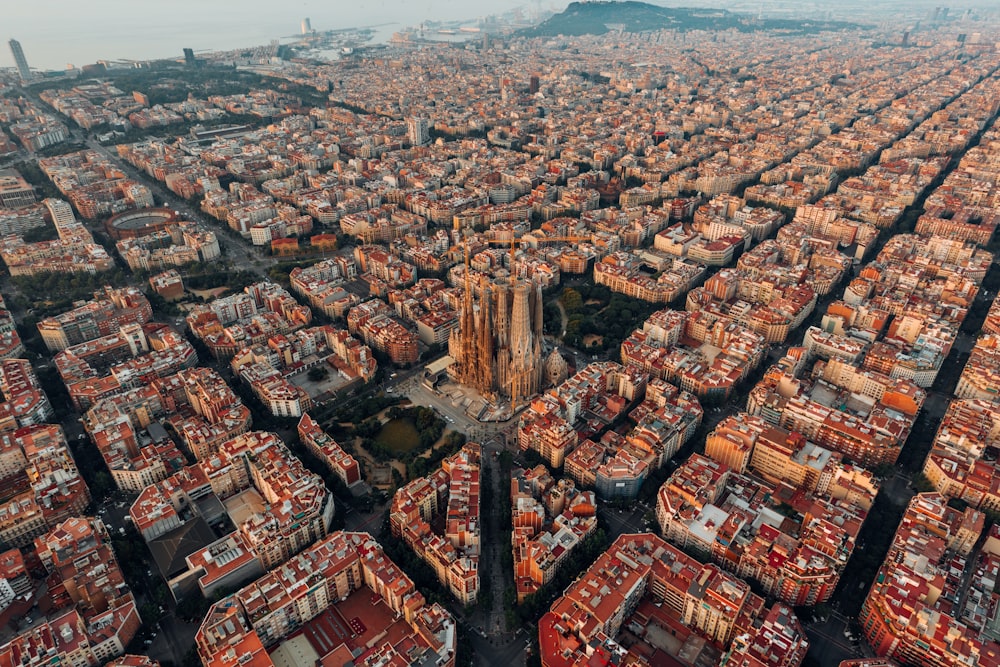Design and architecture in Barcelona: past, present and future


Estefania Salas Felix
Responsible for the transformation of the SMEs segment at Zurich Insurance

Diana Martinez Badia
Senior Architect at Batlleiroig
Barcelona boasts outstanding examples of architecture from several different periods, but unlike many other cities, it has also undergone major transformations that have resulted in innovative changes in the nature of the city.
With the architectural beauty of its historic monuments and the innovative spirit of its contemporary buildings, the city continues to captivate residents and visitors alike, but Barcelona is not only a city to admire; it is a source of inspiration for architects and designers from around the world.
Barcelona’s heritage
Now world-renowned for its rich history, vibrant culture, and innovative architecture, Barcelona has changed considerably over the centuries starting with the opening of Ferran Street in the early 19th century.
One of the most influential names was Ildefons Cerdà, whose subsequent developments and revolutionary vision left a permanent mark on the city's urban landscape towards the end of the century.
The so-called Cerdà Plan of 1859 was an ambitious design whose main objective was to modernize Barcelona in order to meet the challenges of population growth and industrialization. It introduced the innovative concept of the “block” system, an urban design that prioritizes efficiency, accessibility, and quality of life.
One of the most outstanding achievements of Cerdà's work was the creation of the famous Eixample district, now well-known for its wide avenues, green spaces, and similar-sized buildings. The design made it posible to accommodate urban growth and encourage mobility, and it has become a model for city planners around the world.
Later, Oriol Bohigas and others sought to improve living conditions with urban renewal projects designed to regenerate parts of the Ciutat Vella and even revitalize entire neighborhoods.
Under Bohigas, the city also opened up to the sea, a major transformation planned to coincide with the 1992 Olympic Games, enabling the city to modernize its infrastructure, build new sports facilities and introduce improvements in public transport. The renovation not only improved the quality of life for residents, but also endowed Barcelona with an international reputation allowing it to attract both tourists and investment. In addition, the event left a remarkable architectural legacy of works that remain symbols of the city to this day.
The challenges faced by Barcelona today
Despite the success of the Cerdà Plan, Barcelona now faces a number of challenges. Today’s concerns include urban sprawl, dense living conditions, lack of green spaces, and pressure on housing. The city is therefore currently reconfiguring its urban design in order to address major social and environmental challenges and cope with the climate emergency.
The main issues that the city needs to solve to include:
- The need for natural solutions: Creating a pleasant environment in which to live and breathe. Increasing the number of trees within cities and encouraging sustainable mobility through the creation of green routes and infrastructures. Improving air quality and people’s health.
- Repurposing: Maintaining the identity of the city by planning developments that preserve architectural heritage and repurpose available urban spaces.
- Water management: Implementing strategies in order to maximize soil permeability and promote sustainable urban drainage systems that allow rainwater retention for watering plants and the soil. The design of public spaces must ensure sustainable management of the water cycle, which is essential for the future of the city.
- Optimization of energy resources: Maximizing green spaces and shade in public spaces to creatie cooler and healthier urban environments and counteract global warming. Designing allotments in public spaces to enable local citizens to grow produce. Optimizing energy resources and promoting a more sustainable lifestyle.
- Health and wellbeing: Creating an inclusive city that ensures the health and wellbeing of all its inhabitants regardless of gender, origin, age, or functional diversity.
Innovation as an engine of urban renewal
Although the block system of the Eixample is now considered an ideal framework for urban life, the Cerdà plan was initially rejected by the inhabitants of Barcelona. And it is true that the tram line along Diagonal Street was also rejected at first, but is now seen as indispensable by citizens.
Barcelona embraces innovation and change, there is nevertheless intense debate and internal controversy when it comes to innovative projects. Barcelona has had its highs and lows and its successes and failures, but it has always viewed city planning as an engine of change, thus demonstrating its ability to adapt to historical challenges with innovative solutions.
If you want to know the latest English news about Barcelona and the people who bring it to life, sign up to our Blog.








